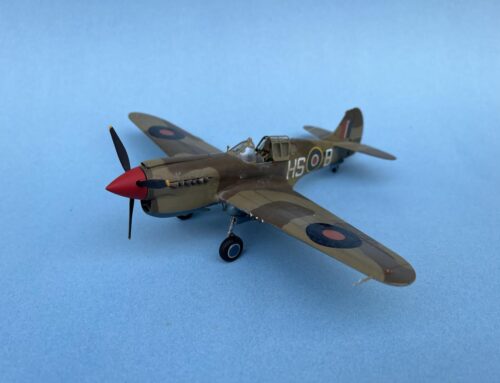 by Kevin Taylor
by Kevin Taylor
Many modellers are in their latter half of their life, which seems a little strange, since most of these same people started the hobby as children. Over the years, the hobby seems to have moved away from being a pastime for kids and into therapy for older folks.
The industry as a whole seems to be geared toward adults and many of us say things like “it would be nice to have more children involved”. This makes sense, as where will the next generation of adult modellers come from if they don’t start as kids?
In giving this some thought, and a little research, it seems that modelling has more to offer children then just a hobby or fun. Yes it is fun, but there are some benefits that we probably don’t think about much, and should consider when trying to encourage youth to join the hobby. Some of the benefits:
Developing Fine Motor Skills
Fine motor skills involve the small muscles of the body that enable such functions as writing, grasping small objects, and fastening clothing. They involve strength, fine motor control, and dexterity. These are skills that are often overlooked in a child’s earlier years, which can lead to issues as they grow.
Building models at an early age can exercise these skills in ways that very few other toys and games can.
Building Confidence
When confronted with a challenge such as looking at a set of instructions and building something from them, many children will approach the task with trepidation and feel they can’t do it. In fact, as modellers we know that it ‘can be done’, and children won’t find that out for themselves until they try.
Of course they can succeed, especially with a little help from an adult, and this in turn builds confidence. Children learn that when confronted with a task of this kind, they can indeed make something that looks like it does on the box. This can be a boost of confidence for anyone at any age.
Enhance Creativity
Yes, model building and painting is an art form. How many toys and computer games actually enhance creativity? Not many, aside from colouring and the occasional craft in school.
Creating a piece of art (even if it does come with instructions) is something that many children don’t get to do at home on a regular basis.
This is an area that has been identified as being weak in the schools as arts programs continually get cut back. Building models can keep a young mind thinking and creating.
Teaching Patience
In today’s society, we want everything now. Instant gratification is the flavour of the century.
That being said, we know as modellers that there is nothing instant about our hobby. Wait for glue to dry, paint to dry, taking our time to ensure we don’t miss any details. Being patient is almost non-existent for many children, and modelling might just be a way to instill a little patience in our rushed world.
Following Directions
Almost all children seem to be wizards at computers and video games, but if you ever watch them, you’ll notice that most of them don’t read instructions on the screen. They simply try things until they do or don’t work. The instructions are a burden as they take time to read.
This may be fine in a game where you can die a thousand times while learning the ins and outs, but won’t be of much value when building a model.
Ignoring instructions when building a model can be and usually is disastrous. Following instructions for a model can be very challenging, even to a seasoned builder. It really is similar to following blueprints (in another language), which can only benefit a child for years to come in many areas of their lives.
Engineering, Mechanics, Robotics and Physics
As model builders, we don’t think of how we are affected by these areas, but we deal with them on a regular basis. Understanding of how things work, move, propell, and so on, is all part of what we do as builders.
For a child, these are areas that they won’t engage themselves in until their teens. Even then they may learn of these sciences, but may not be able to apply them to something. Where will the great engineers of our future come from, and how will they get interested in the first place? Maybe building models is a place to start.
History
This is a passion for many modellers, myself included. It seems that it is fine for a child to build a model of a car, boat or spaceship, but many hobby shops, parents and teachers omit the historical value of military modelling. This is our history, which includes war. I have learned more about history through modelling than I ever would have in school.
Children need to look at the past, how we got where we are today, what sacrifices were made, battles fought, etc. Often military modelling is avoided as people assume it promotes violence. Most military models are non-violent. Even in my collection, I can see that most of my models don’t include death or killing. As military modellers, we are recreating a moment in time. Usually very important moments in the history of the world. It is for this reason that I encourage all modellers to promote the art of historical modelling to kids.
Safety
Finally, safety is required when building and painting models. Children learn how to use tools (many of them sharp), work with solvents and glues, etc. They will also learn the importance of working in a safe environment with ventilation, masks and gloves.
Some of these safety tips and skills will last throughout their lives in jobs, hobbies, and so on.
Conclusion
I would very much like to encourage adult modellers to introduce a young person you know to the variety of great things that come from building and painting models. Maybe consider buying a child their ‘first kit’ with some supplies. Who knows…. they may get the ‘bug’ that we’ve happily caught years ago.






